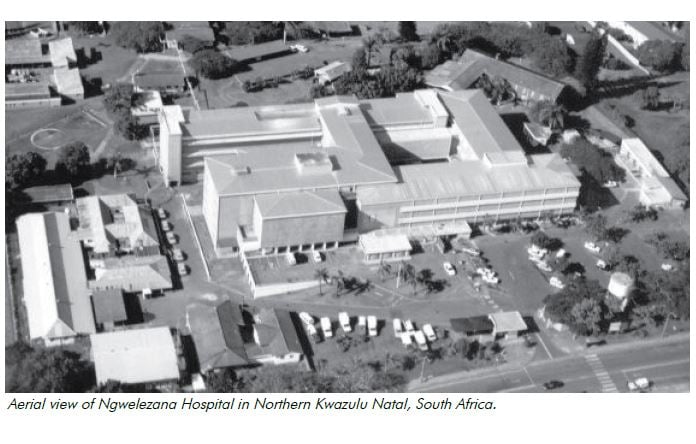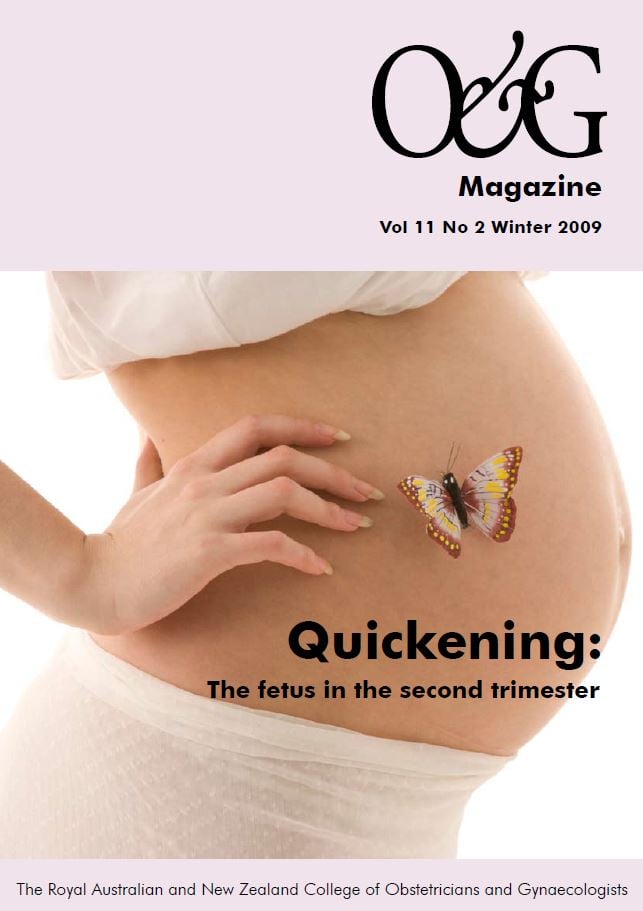One of my teachers in the 1970s told us, ‘Every time a woman has sexual intercourse she lays her life on the line’. In the developed world, this was, to me, little more than a theoretical risk, probably limited to the potential to have a major postpartum haemorrhage or an amniotic fluid embolism if a woman got pregnant.
The maternal death rate in the 1970s was about 14 per 100,000 so the chance was small. You could possibly also die from an ectopic pregnancy, but what were the chances of dying if you didn’t get pregnant as a result of that act of sexual intercourse? What could you die of?
It had been becoming clearer during the late 1970s that cervical cancer was probably caused by a sexually acquired infection with human papillomavirus (HPV). As the role of HPV was being identified, the cervical smear screening programs were being rolled out around the world, so the chance of having invasive cervical cancer was diminishing and, with that, the even smaller chance of dying from it.
In the 1980s, the HIV/AIDS danger exploded into being. Prior to that, warnings against unprotected sex were made because of the potential to contract any of a number of sexually transmitted diseases (STDs), now known as sexually transmitted infections (STIs), the name change serving to highlight that they were not a major problem as diseases, but simply as infections which were treatable. The media was now full of warnings about unprotected sex for its lethal potential, but in New Zealand, where I was practising at the time, AIDS was still a homosexual problem and didn’t appear in a gynaecological practice.
In short, although there was a theoretical risk that sex could kill you, it was a fact of life that I never saw a gynaecological patient die and didn’t expect to either. Was I not trained to the standard of the day to save lives? The risks of surgery were extremely low – there was easy availability of blood for surgical haemorrhage, anticoagulants for prevention of pulmonary embolus, antibiotics for postoperative infections and the oncologists knew how to treat malignancy in their specialist centres to a high five-year survival rate.
In 1992, I responded to a plea from the regional obstetrician for Zululand, South Africa, for a specialist to work fulltime in Ngwelezana Hospital, which is the regional referral centre for Northern KwaZulu Natal. This facility, run by the then KwaZulu Government (funded by Pretoria), served a population of about two million Zulu people for whom the Caucasian hospitals were unavailable and the private hospitals unattainable. A network of clinics run by nurses provided the primary healthcare in the province, with a sprinkling of GPs mostly only found in the bigger towns. Hence, the largely rural population had simply a third world medical service.
What I found on arriving was a well-supplied hospital with very basic wards. There was rarely a mattress on any of the trolleys – the patient just lay on the metal base with only a sheet between skin and cold steel. The demand was large and there was one South African-trained and very experienced specialist gynaecologist. He was an Italian who had spent time in Somalia and then in the Congo. The resident doctors in the hospital were, for the most part, overseas graduates. I was called upon in very short order to deal with conditions straight out of the textbooks and some that weren’t! The maternal mortality was probably about 100/100,000, but by the time I left in 2005, it had risen to 400/100,000, of which nearly 60 per cent was due to AIDS. But what of the deaths not related to pregnancy? Surprisingly, some of the most difficult operations I was called upon to do were not often followed by death, for example drainage of pelvic abscess. Gross pelvic inflammatory disease, mostly caused by sexual intercourse, was rife. I seemed to have at least one on every weekly operating list. I never got used to the smell of the pus drained from large tubal abscesses. In truth, the gynaecological causes of death were the same as one would see in the first world.

Carcinoma of the cervix was highest on the list. We would send 110 to 120 women per year to the gynaecology oncology unit at the academic hospital in Durban, with a diagnosis of stage two to stage four carcinoma of the cervix. The worst of these cases would sometimes be returned to us after their radiotherapy, moribund, and would be nursed in our gynaecology ward until they died. I got to the stage where I could diagnose these unfortunate women as they entered the gynaecology clinic, from the characteristic smell of their discharge. We did a lot of colposcopy as we developed the service and were able to help many whose dysplasia had not progressed beyond CIN3. However, there was no formal screening program, so these were the lucky ones who had been fortunate enough to be seen by good doctors or clinic nurses who ensured that a smear was taken, when presenting for some other reason. Other gynaecological malignancies were much less common.
Occasionally, but not more than once every couple of years or so, we would have a postoperative death from pulmonary embolism. On one occasion on a Saturday morning, after doing an abdominal hysterectomy on the Friday morning, I got a phone call from the sister in the gynae ward to say that my patient had collapsed in the toilet. She was advised to call the resident on duty and I set out to get in my car to go to the hospital. Moments later I was stopped by another call from her to say that the ‘patient was late’. Mystified by this and thinking that she meant the doctor was delayed in arriving in the ward, I repeated that I was on my way, at which time I was told that I needn’t come as, in the South African Indian niceties of idiom, when someone ‘is late’ it meant she had died!
There was one elderly lady who had a pelvic mass diagnosed on ultrasound to be a fibroid, but extending into the upper abdomen towards her liver. Fibroids of this size are not uncommon in black African women. We arranged an abdominal hysterectomy, however, because there had been some doubt about the mass and its relationship to the liver with a suggestion that it may have been malignant, I arranged to have a surgeon with liver experience help me. It turned out she had a metastasis in the liver, from a uterine sarcoma, with multiple secondaries. No matter how we tried to excise and repair the liver extension, it was not possible to control the bleeding. We cobbled her up as best we could and using a pack with Gelfoam and a drain, had the situation at least stable. My worst fears were realised as we watched her in ICU as the drainage continued, until we could no longer keep up the transfusion and she died.
As was so often the case, the family of the elderly lady were grateful and appreciative of the efforts we had made, not in the least querying for one moment whether an alternative outcome might have been available, in short, very matter of fact and accepting. This acceptance I feel sure rose out of two facts about Africa. Firstly, top class or even standard western ideas of medical care are unknown to the majority of poor subsistence-level village people, so expectations are low. Secondly, that death is a fact of life. People die at home, in their community surroundings, of accidents, illness and old age, and particularly these days with so many young people dying of AIDS, death is not an unusual event. They are used to it.
There were no pathologists on the staff. Technicians staffed the laboratory. Histological specimens and advanced investigations (including beta HCG) all went down to King Edward VIII Hospital in Durban. Results took at least a week and often two if they had to be sent away. One morning, as we met for the ‘handover’, I was told of a young woman who had arrived in the outpatients the night before, but who was dead within a short time of arrival, without time to assess her properly and make a diagnosis. The history was very suggestive of a bleeding ectopic pregnancy, but no one was sure. I realised the only way to find out was to do a post-mortem. When unexplained deaths such as these occurred, they would be reported to the coroner, whose action usually took the form of interviewing the doctor over the phone and if he was happy that there seemed to be no suspicious circumstances, would not order a post-mortem but record a verdict of death from natural causes! If he wanted a post-mortem, there was a local GP who was on contract to the police for forensics and would have given no more information than I could find out myself. I took a scalpel down to the mortuary and opened the abdomen. It was a ruptured ectopic pregnancy. What struck me was how different it is to open an abdomen on a cold corpse, with rigor mortis setting in, compared with operating on the living.
Soon after I arrived in South Africa, I had occasion to tell a patient that she needed an operation, for what purpose I do not remember. Her reply had been that she didn’t want to be operated on, as she would die, but on being pressed as to the necessity of the procedure and that she could die without it, signed the consent form. To my absolute horror and mystification she died on the third postoperative day with not a single hint of warning. As we couldn’t get consent to do a post-mortem, I do not know to this day what happened. Even if we had, I doubt we could have found someone who could make the detailed examination it might have required. It was probably a pulmonary embolus.
I had never seen a case of chronic inversion of the uterus and never expected to. However, one day a woman in her late forties with a long history of persistent bleeding due to chronic inversion was admitted. The differential diagnosis with that sort of history always included carcinoma of cervix or endometrium and prolapsed fibroid. Speculum examination had the registrar completely confused, as she could not understand what she was seeing. Once the diagnosis was made, I had to confess, though I gave not a hint to anyone, that I had no idea how to deal with this. I quickly did a search of the textbooks which were largely unhelpful and then the internet. I discovered that an operation had been described many years ago, which would allow preservation of the uterus, but I felt that in this case such preservation was unwarranted and I determined to offer her a vaginal hysterectomy. To my amazement she declined. Thinking she was not prepared to lose her uterus, I then offered to perform the older procedure. She was not going to have any operation, because if she did, ‘ngizofa’, which means ‘I will die’. I never did find out why she was convinced of this and no matter what explanations were given, she remained obdurate. I remembered my previous experience and left it at that. She left the hospital that day and I never heard from her again.
Yes, sex can kill, but the truth is that most of the time it is the complications of pregnancy that do this.





Leave a Reply